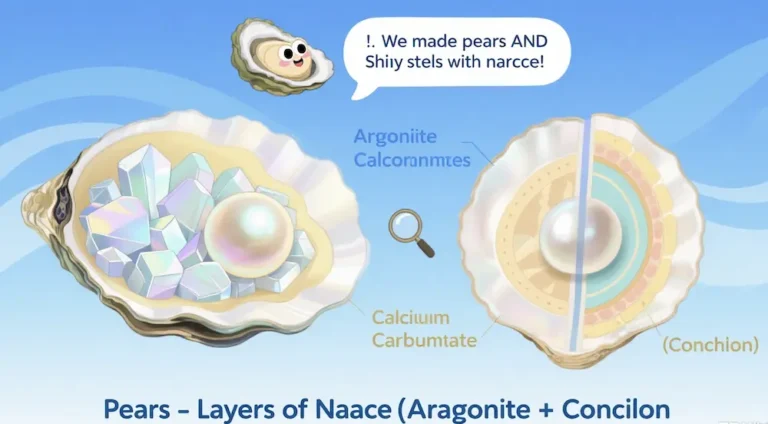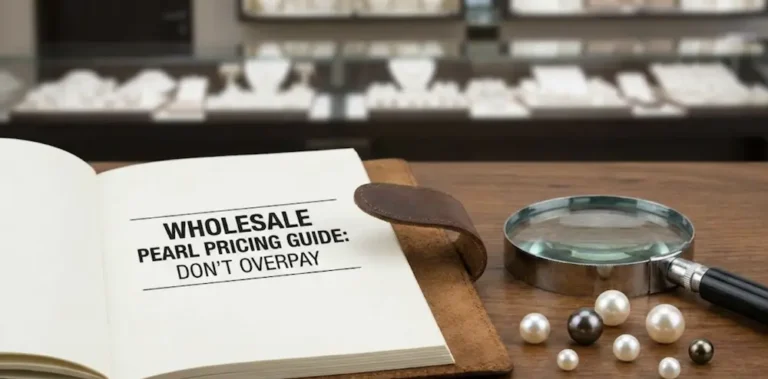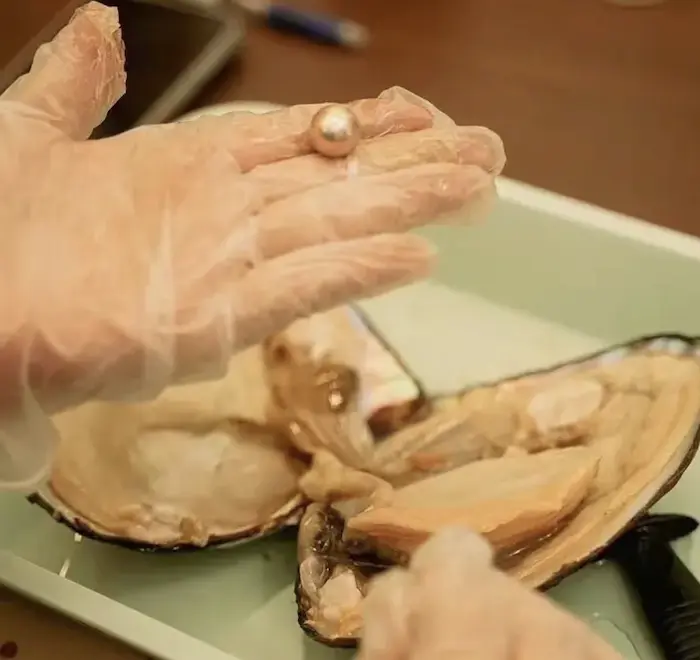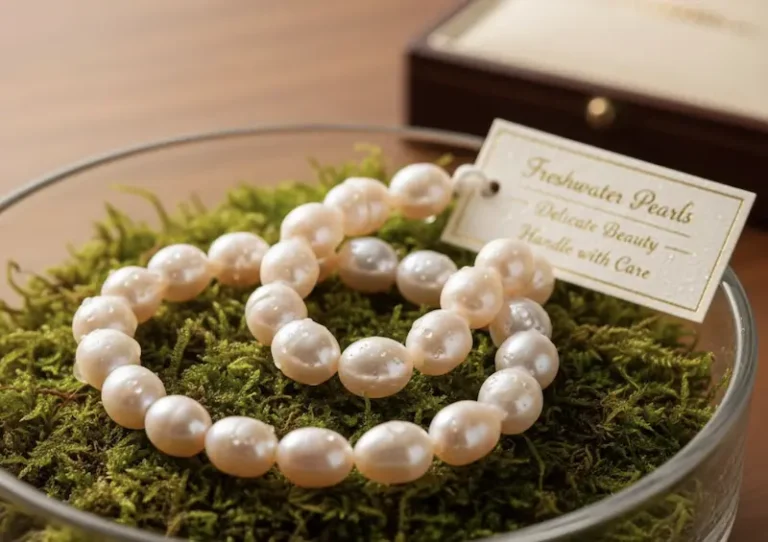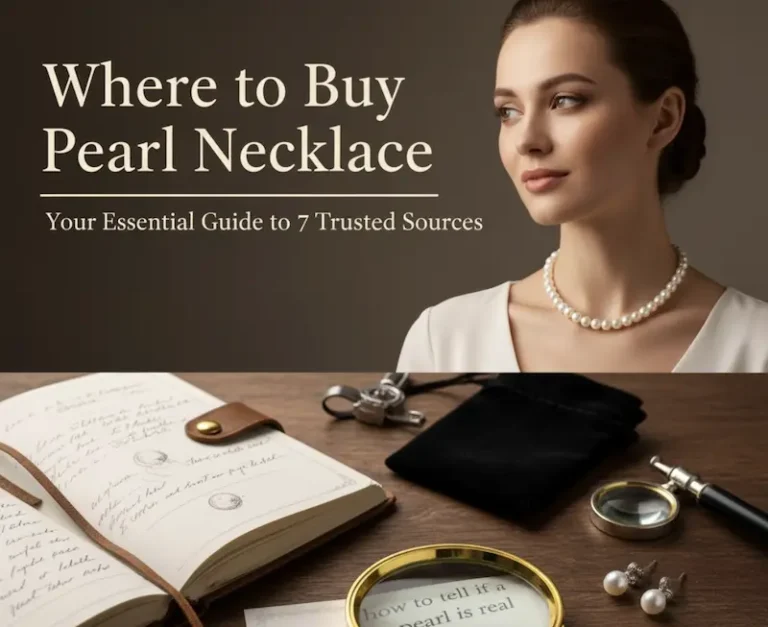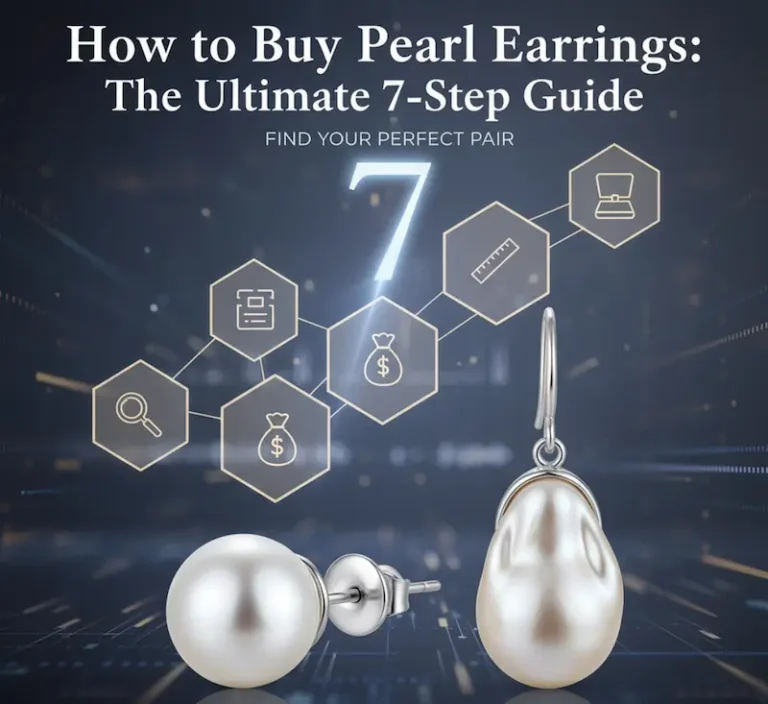Starting a pearl jewelry business is super exciting right now, and easier than ever! The pearl market is growing, and selling online means you can reach customers all over the world. So, if you’re dreaming of starting your own brand or adding to your current jewelry line, wholesale pearls is a great way to build a business that’s both profitable and will last.
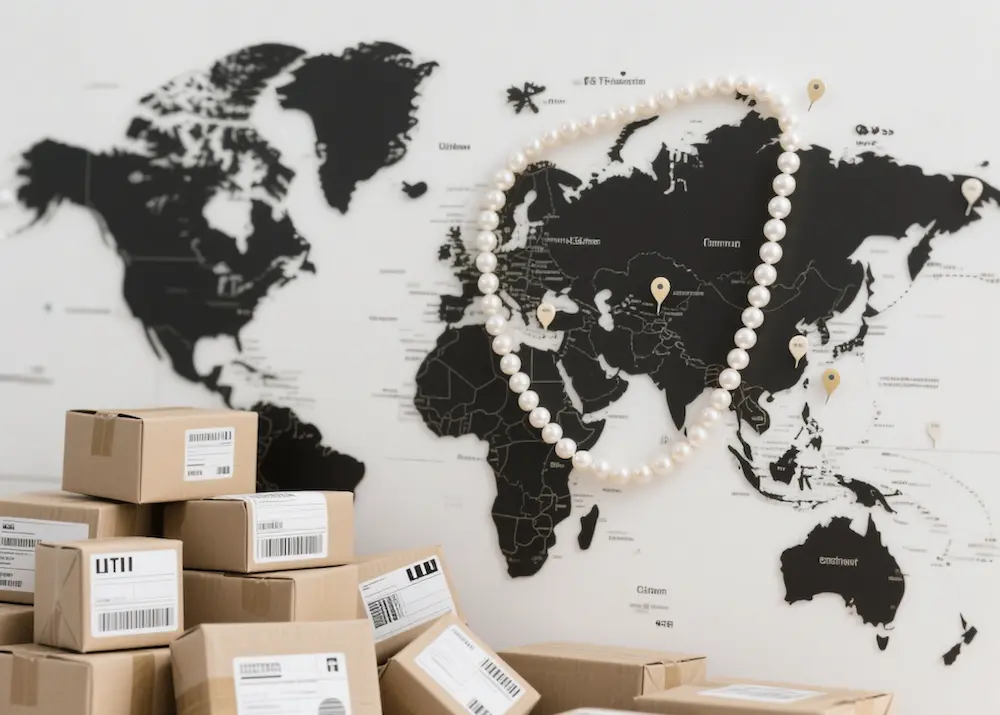
What’s great about pearls isn’t just how elegant they are, but also that they’re a versatile business opportunity. Unlike some other jewelry that’s hard to make, pearl jewelry can be pretty simple to create but still sell for good prices. The secret to doing well? Knowing how to find good quality wholesale pearls in bulk and turn them into jewelry that your customers will love.
Understanding the Pearl Market Landscape
Before you jump into starting your wholesale pearls jewelry business, it’s important to know what you’re getting into. The pearl business has some real benefits that make it a great choice, especially if you’re just starting out.
First off, pearls are seen as elegant and classy everywhere and by everyone, always. So you’re not just betting on a fad that will disappear. You’re investing in something that’s always going to be popular. Second, it’s relatively easy to get started compared to other types of jewelry. You don’t need fancy equipment or special skills to cut gemstones.
The market is also pretty wide open. You can sell affordable freshwater pearl jewelry for under $100, or super rare South Sea pearls that go for thousands. This lets you decide what kind of pearl business you want to have, depending on who you want to sell to and how much money you have to start with.
When you’re buying wholesale pearls you’ll see a few different kinds, and they all have different prices and appeal:

| Pearl Type | Origin | Typical Wholesale Price Range | Market Position |
|---|---|---|---|
| Freshwater pearl | China, USA | $5-$50 per strand | Entry-level to mid-range |
| Akoya pearl | Japan, China | $50-$500 per strand | Classic, traditional |
| Tahitian pearl | French Polynesia | $200-$2,000 per strand | Luxury, exotic |
| South Sea pearl | Australia, Philippines | $500-$5,000 per strand | Ultra-luxury |
Step 1: Define Your Business Model and Target Market
To really succeed selling pearl jewelry, you need to know exactly who you’re selling to and how. Are you trying to reach brides who want classic wedding jewelry? Are you going after trendy young adults who like modern pearl designs? Or are you trying to reach business people who need high-tech accessories?
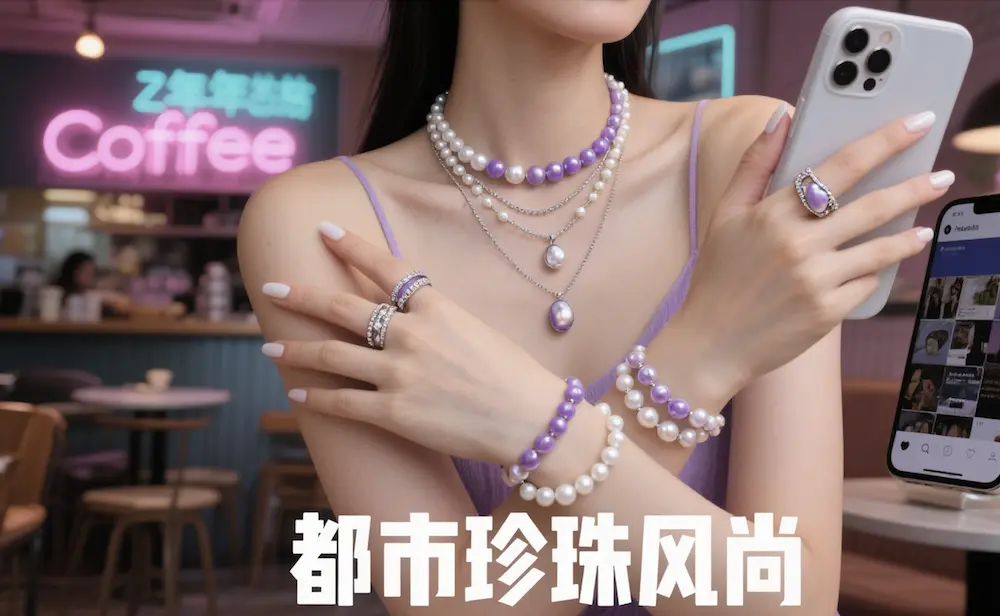
Every group of customers has its own ideas about what they want, how much they’re willing to pay, and how they like to shop. For instance, young people who work might want simple pearl earrings they can wear every day, while rich people might want dramatic necklaces made with rare and unusual pearls. You can use these differences to help you make all of your other choices, such as how to price and sell your jewelry and which pearls to buy from wholesale pearls.
You should also think about whether you want to mostly sell jewelry that is already made or offer custom design services. A lot of successful pearl jewelry stores do both: they keep a standard collection of popular pieces and also take custom orders for those special, one-of-a-kind occasions.
Research Your Competition
Spend some time checking out what’s already out there in the area you’re focusing on. Go to local jewelry stores, look at online shops, and if you can, go to jewelry trade shows—especially those featuring wholesale pearls suppliers. Pay attention to the jewelry itself, but also how it’s displayed, how much it costs, and how it’s being advertised.
See if you can spot any holes in the market. Maybe there’s not much modern, simple pearl jewelry where you are, or perhaps no one’s selling affordable, but fancy pieces to young professionals. These kinds of gaps are opportunities for your new business to jump in.
Step 2: Source Reliable Wholesale Pearl Suppliers
Finding the right pearl supplier is probably the most important thing you’ll do when starting your business. Who you get your pearls from will directly affect the quality of your jewelry, how much you can sell it for, and whether you can consistently deliver orders on time.
Start by researching established suppliers with strong reputations in the industry. A reliable Pearl Manufacturer should offer transparent pricing, consistent quality standards, and responsive customer service. Don’t just focus on price—a slightly more expensive supplier who delivers consistent quality and reliable shipping may be worth the premium.
When you’re looking at reliable pearl suppliers, be sure to ask them about:
- Minimum order quantities
- Quality grading standards
- Return and exchange policies
- Shipping timelines and costs
- Payment terms and methods
- Availability of certificates of authenticity
Building Supplier Relationships
Once you have a few wholesale pearls suppliers that look good, start small. You can either place sample orders or buy a few things at first to see how good their products and service are. You can look at a lot of suppliers this way without having to pay a lot of money up front.
As you start working with suppliers, good communication is key. Regular contact keeps you in the loop about new products, what’s in season, and any potential problems with getting supplies. Also, a lot of suppliers will give you better prices and deals if you order regularly and pay on time.
As your business gets bigger, think about using more than one wholesale pearls supplier. It’s good to have a main supplier to keep things consistent, but it is also good to have backups if your main supplier has problems. Additionally, it gives you more power to get better deals.
Step 3: Understand Pearl Quality and Grading
If you want to do well selling pearl jewelry, you really need to learn a lot about wholesale pearls yourself. Customers will be looking to you for advice on quality, and the better you can explain things to them, the more they’ll trust your brand and be willing to pay more.
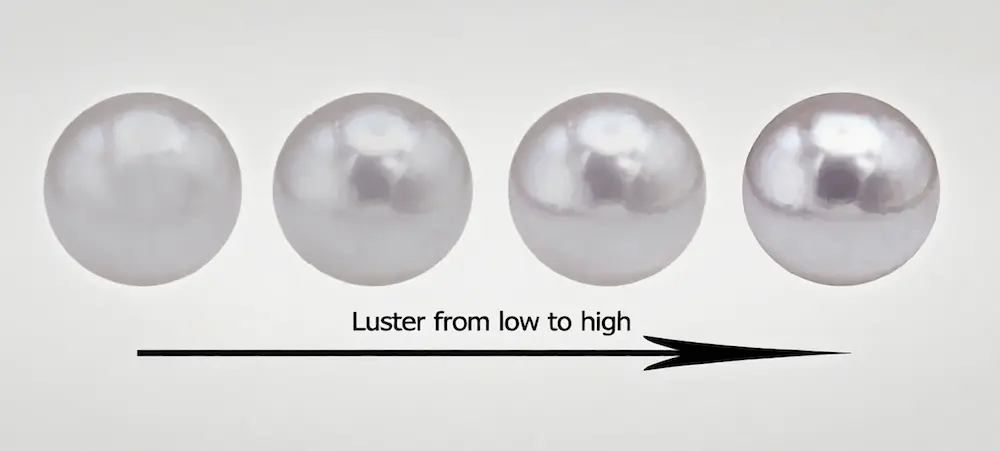
Usually, you can tell how good a pearl is by looking at these seven things:
- The luster is probably the most important part – it’s what makes pearls look so glowy. Good pearls reflect light really well, making them bright and clear. Bad ones look dull and almost chalky.
- The surface quality means how clean the pearl is – are there any spots or bumps? A few little marks are normal, especially for less expensive pearls, but big, obvious flaws can really lower the value.
- The shape can be anything from perfectly round (which is usually the most expensive) to sort of lumpy or irregular (called baroque), which can be cool for unique jewelry. And of course, *size* matters. Bigger pearls cost more.
- Color is about the main color of the pearl plus any subtle secondary colors (overtones). White and creamy colors are always popular, but colored pearls, like black Tahitian pearls or golden South Sea pearls, can be really valuable too.
Creating Your Quality Standards
You should figure out exactly what “quality” means for your business and stick to it. Will you only sell the best, top-notch pearls? Or will you have different levels of quality to offer things at different prices? You need to decide this and make sure you’re consistent about it.
Make sure you write down exactly what your wholesale pearls quality standards are. Then, teach your employees and anyone you work with how to spot the differences in quality. Staying consistent like this helps customers trust you, and it makes sure your brand is known for the same level of quality every time.
Step 4: Design Your Product Line
Now that you know your customers and have wholesale pearls suppliers lined up, you can start designing your first jewelry collection. Don’t try to make everything all at once – start with a small, focused collection.
Consider the “80/20 rule”—roughly 80% of your sales will likely come from 20% of your products. Focus on identifying and perfecting that core 20% before expanding into specialty items.
A few different kinds of jewelry could be in your first collection:
- Classic things: Simple pearl necklaces and basic earrings that most people would like.
- Statement pieces: These are one-of-a-kind, eye-catching designs that really show off your style and can be sold for more.
- Occasion wear: Special clothes for events like weddings, graduations, or even work.
- Trendy pieces: Modern styles that fashionable people will love.
Working with Pearl Strands
When you buy wholesale pearls, they usually come in strands of 50 to 60 pearls, depending on how big they are. So, learning how to work with pearl strands well is important for keeping your costs low and keeping track of your stock.
Think about how you’re going to use each strand. You could use different sizes to make a necklace that gets bigger in the middle, or you could cut a strand in half to make matching earrings and necklaces. Planning like this will help you waste less and make the most profit from each strand you buy.
Step 5: Set Up Your Business Operations
Okay, so you know what you’re selling—wholesale pearls—and where you can get it. Now it’s time to take care of the important but boring business things. It might not be as much fun as making jewelry, but doing these administrative tasks is very important if you want to run your business legally and well.
You’ll need to check with your local government to find out what permits you need because the rules for registering and licensing businesses vary from place to place. Most jewelry stores will need at least a basic business license. If you sell things in a store or online, you might also need extra permits.
Insurance is super important for jewelry businesses. Here’s what you should think about insuring:
- General liability
- Product liability
- Inventory (theft and damage)
- Business interruption
As your business grows, you’ll need a good way to keep track of your stock. It’s much better to use a simple spreadsheet than to try to remember everything yourself. If you keep track of your inventory correctly, you won’t accidentally sell things you don’t have or run out of popular items.
Pricing Strategy
Finding the right balance is key to coming up with a pricing strategy that will work for your jewelry in the long run. You should think about how much your pearls from wholesale pearls, your time, and your general business costs are, as well as what your competitors are charging and what your customers are willing to pay.
A pretty standard method is to simply double what you paid for something to set your price – that’s called keystone pricing. But, that doesn’t always work perfectly. For items you sell a lot of, where you don’t make a ton of money on each one, you might use a smaller markup. On the other hand, for really special or custom-made pieces, you can probably charge more.
| Cost Component | Typical Percentage of Retail Price |
|---|---|
| Materials (wholesale pearls, findings) | 25-30% |
| Labor (design, assembly, quality control) | 15-20% |
| Overhead (rent, insurance, utilities) | 10-15% |
| Marketing and sales | 10-15% |
| Profit margin | 20-30% |
Step 6: Build Your Brand and Marketing Strategy
When you’re selling jewelry, the way people see your brand is almost as important as how well-made your jewelry actually is. People buying pearl jewelry aren’t just buying something to wear; they’re buying into a feeling and a certain image.
Think carefully about the kind of brand you want to be. It should really match what’s important to the people you’re trying to reach. For example, if you’re aiming for young, working people, your brand might focus on being modern, stylish, and easy to wear every day. But if you’re going for a high-end, luxury feel, you’ll want to emphasize how unique, rare, and well-made your jewelry is.
Digital Marketing for Pearl Jewelry
Getting your online marketing right is super important if you sell jewelry. People tend to do a lot of research before they buy. And when it comes to pearls, you have to have amazing photos. The beauty of a pearl is all about its shine and how smooth it is, so your pictures need to really show that off.
Social media, especially Instagram and Pinterest, can be a game-changer for selling jewelry. Because they’re so visual, you can really show off your pieces and give people ideas about how they’d look wearing them – like how a necklace would complete an outfit, or the perfect earrings for a special event.
Making useful content is a great way to establish yourself as an expert in the world of pearls. You could write blog posts, make videos, or even just post on social media that teach people about the quality of pearls, how to take care of them, and how to wear them. This makes people trust you and lets them know that you are the best place to go for pearl information.
Traditional Marketing Approaches
Even though online is important, don’t forget about more traditional ways to market, especially if you’re trying to reach older folks or people in your local area. Things like craft fairs, jewelry shows, and trunk shows are still great! They let you meet customers face-to-face, answer their questions, and make sales right away.
Working with bridal shops, clothing stores, or other businesses that go well with your brand can help you reach more people without spending a lot on advertising. And don’t forget how powerful good reviews are. Many successful pearl jewelry businesses grew just because happy customers told their friends about them.
Step 7: Launch and Scale Your Business
You have your designs, your suppliers, and your marketing plan all ready to go. Now is the time to start! But don’t go too big right away. Start with a “soft launch.” Let a small group of friends, family, or customers in your area see what you’ve got. This gives you time to fix any problems and get feedback before you start marketing for real.
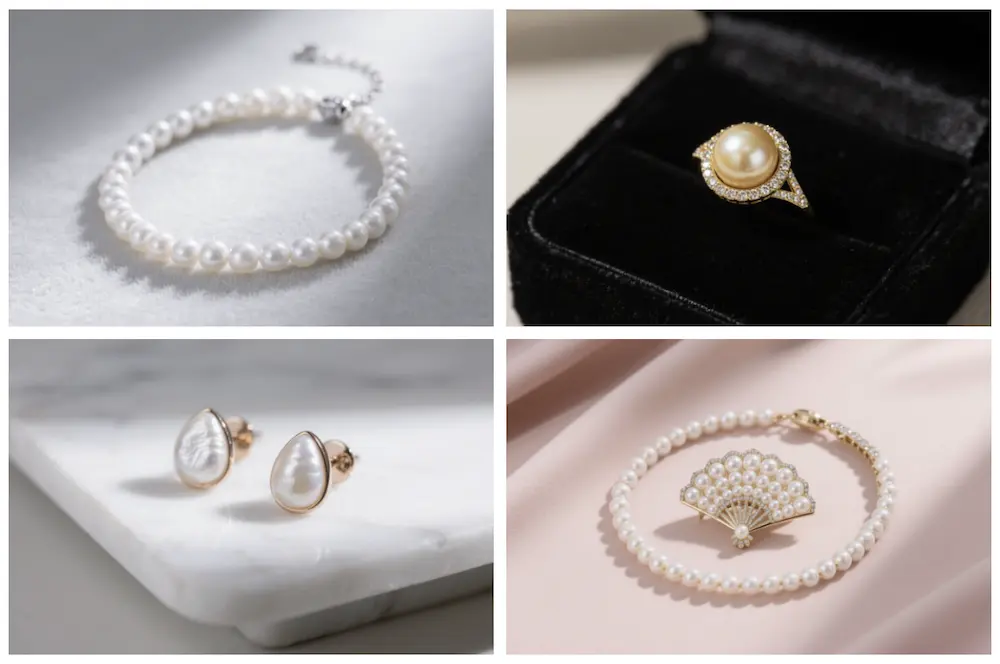
During those first few sales, really listen to what your customers have to say. Are they asking for things you don’t have? Do they have concerns about how well things are made, or whether the prices are right? That kind of feedback is gold – it’ll help you fine-tune your jewelry and your whole business.
Managing Growth
As your business gets bigger, things will naturally get more complex. Keeping track of inventory becomes trickier, you’ll need to spend more time on customer service, and you might need to hire some help or get better software and systems to keep things running smoothly.
Think about which ways you want your business to grow:
- More products: Do you want to add new styles, use different kinds of pearls, or create entirely new types of jewelry?
- More customers: Do you want to try selling to different groups of people, or expand to new cities or countries?
- More ways to sell: Do you want to start selling wholesale to other stores, or offer international shipping?
The Gemological Institute of America says that when customers really understand pearl quality and how to care for them, they’re much happier and more likely to buy from you again. So, it’s worth investing in learning more about pearls yourself, and then sharing that knowledge with your customers. It’ll build loyalty and get people talking about your business!
Financial Management and Scaling
Successful scaling requires careful financial management. Track your key metrics closely:
- Average order value
- Customer acquisition cost
- Customer lifetime value
- Inventory turnover rates
- Gross and net profit margins
Tracking these numbers can help you make smart decisions about when and how to invest in making your business bigger.
Common Challenges and How to Overcome Them
Every pearl jewelry business faces predictable challenges. Being prepared for these obstacles can help you navigate them more successfully.
Quality consistency: Keeping the quality of your pearls consistent can be tough since natural pearls can be so different, even when they’re supposed to be the same grade. So, it’s important to work closely with suppliers you trust who know what you want and set up good quality control checks.
Seasonal fluctuations: Like most jewelry stores, the sales of pearl jewelry will probably go up and down with the seasons. They tend to sell better during wedding season in spring and summer and around the holidays. So, plan your stock and finances with that in mind! Also, think about creating special pearl items to sell during the slower months.
Competition from mass retailers: Big chain stores and online marketplaces can make it harder to compete on price and grab customers. Your best bet is to focus on things they can’t easily offer: personal attention, custom designs, educating customers about pearls, and creating one-of-a-kind pieces that are different from the mass-produced stuff.
Building Customer Loyalty
In the jewelry business, keeping customers happy and getting them to recommend you is super important. A happy customer might come back for anniversary gifts, tell their friends who are getting married about you, or even buy more expensive pieces from you as they earn more money.
Giving great customer service is a must, but don’t stop there! Stay in touch with people who’ve bought from you before. Sending out email newsletters with your newest items, tips on taking care of their pearl jewelry, or ideas on how to wear them will help them remember you when they’re ready to buy again.
Think about starting a customer loyalty program – maybe offering discounts on their next purchase or giving them early access to your latest jewelry. These kinds of programs encourage people to come back and also make them feel appreciated.
Building Long-term Success
The pearl jewelry business can do very well over time, but you need to keep an eye on quality, customer relationships, and what’s new in the market.
Read trade magazines, go to jewelry shows if you can, and keep in touch with your suppliers to stay up to date. The world of pearls is always changing. There are new ways to grow pearls, new designs, and customers’ tastes change.
- Continuous education: You and your customers will benefit from learning new things. You could take classes in gemology or jewelry design, go to workshops, or get certified to show that you know what you’re talking about. The American Gem Society and other groups offer classes just for people who work in the jewelry business.
- Sustainable business practices: More and more customers, especially younger ones, care about sustainable business practices. Think about how your business can support environmentally friendly pearl farming and let your customers know you care too.
The Pearl Marketing Association says that jewelry businesses that focus on education and quality tend to have happier customers who stick around longer and spend more money compared to businesses that only compete on price.
FAQs
How much money is 1 pearl worth?
Anywhere from $5 for a humble freshwater bead to $10 k+ for a perfect 15 mm South-Sea stunner.
Are Costco pearls real?
Yes—Costco sells genuine cultured pearls, just in bulk-softer prices.
Why is mother of pearl so cheap?
It’s the shell’s inner lining, not a rare round pearl, so supply is huge and prices stay low.
Why are pearls so cheap now?
China’s high-volume freshwater farms flood the market, pushing decent pearls to drug-store prices.
Conclusion
Buying wholesale pearls to start a pearl jewelry business is a great idea! In a market full of people who value beauty, quality, and skilled craftsmanship, you can start a business that makes money. To be successful, you need to really know who you’re selling to, get high-quality pearls from reliable suppliers, and build a brand that your ideal customers can relate to.
Keep in mind that doing well in the pearl jewelry business isn’t just about selling pretty things. It’s also about teaching your customers about pearls, giving them great service, and building relationships that last. Every happy customer becomes a walking advertisement for your business, and they could bring in even more sales through recommendations and repeat business.
The fact that pearls are always stylish, combined with all the new ways to market things, makes pearl jewelry a great business opportunity. But, it’s for those who are willing to put in the time and effort to build strong relationships – with the people who supply your pearls, your customers, and everyone else in the pearl industry.
Whether you want to start small from your home or build a huge jewelry brand, the rules are the same: sell good products, give great service, and really love the beauty and elegance that only pearls can bring.
As you start this exciting journey, remember that every successful pearl jewelry business started with someone taking that first step. If you plan carefully, focus on quality, and promise to make your customers happy, your wholesale pearls could be the start of a successful and profitable business. A business that makes customers happy and beautiful for years to come!
Starting with high-quality wholesale pearls from reliable pearl suppliers gives you the base you need to build a successful business.

